3-Way Low Profile CPU Cooling Shoot-Out: Reeven, Phanteks, & Noctua
by E. Fylladitakis on January 18, 2017 8:00 AM EST- Posted in
- Cases/Cooling/PSUs
- Noctua
- Phanteks
- Cooler
- Reeven
The Noctua NH-C14S
The sheer size of the box hints that the Noctua NH-C14S is not a very compact construct. Much like nearly all of Noctua’s products, the artwork on the box is austere, limited to providing useful information about the cooler itself. Inside the box everything is individually packed into separate cardboard boxes. Alongside with the mounting hardware, Noctua is also offering a basic screwdriver for the installation of the cooler, a fan speed reducer, a metallic case badge and a syringe with NT-H1 thermal compound.
Unlike the other two coolers in this review, the Noctua NH-C14S has not been designed to be very compact, but to fill the gap between low-profile coolers and standard tower coolers for users that purchased relatively tall/wide HTPC cases. Although its core design is similar to that of other horizontal coolers, the fin array is wider and much thicker, offering more than three times as much surface area as very low profile coolers. Two small holes can be seen halfway through the array, meant for the provided screwdriver to go through from and reach the screws at the base of the cooler. The first fin of the array is not physically different than the rest, but it does have the company logo punched onto it.
The NH-C14S has a single 140 mm NF-A14 PWM fan installed. The major twist with the design of the NH-C14S is the position of the fan, which is underneath the fin array and is pushing the air upwards through it. Still, standard RAM modules will fit underneath the NH-C14S. The user has the option to place the fan (or another fan) at the top of the fin array, increasing the clearance of the RAM modules by 25 mm but adding the same height to the overall height of the cooler. With the fan at the top of the array, RAM modules up to 70 mm tall can fit, allowing greater hardware compatibility if the case can support a cooler that is 142 mm tall.
Noctua’s Secufirm2 mounting system design has the cooler ready for installation, with the mounting braces and screws already waiting on the base of the cooler. Six nickel plated heatpipes are sandwiched between the copper base of the cooler and its bulky aluminum top. The machining of the base is flawless, without even the slightest imperfection to be found upon close inspection. It seems that the contact surface has been worked from the center out. Although it has not a mirror finish, it is extremely smooth and difficult to soil.


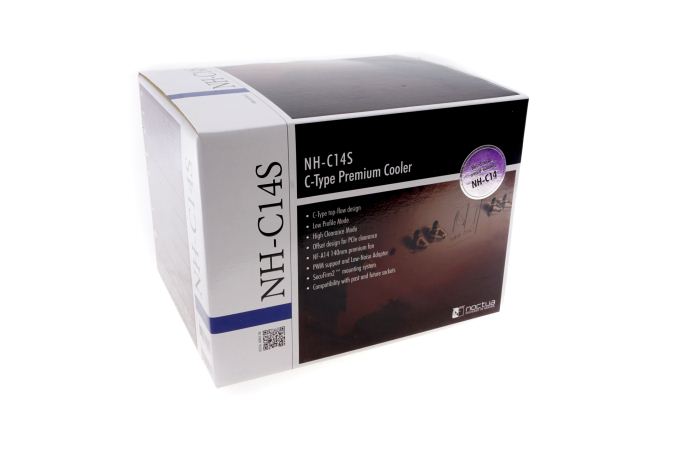
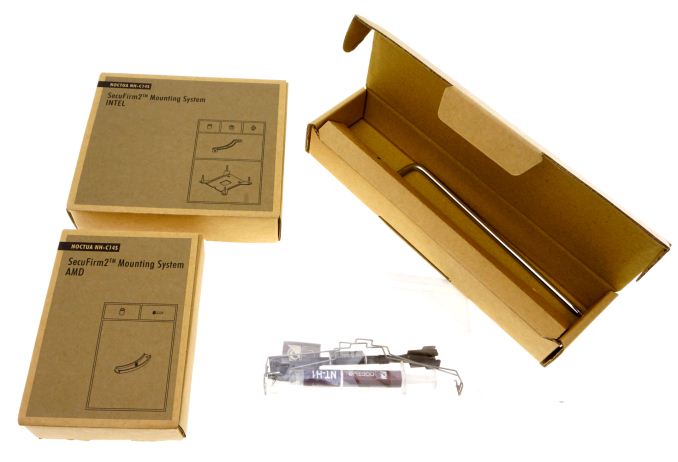
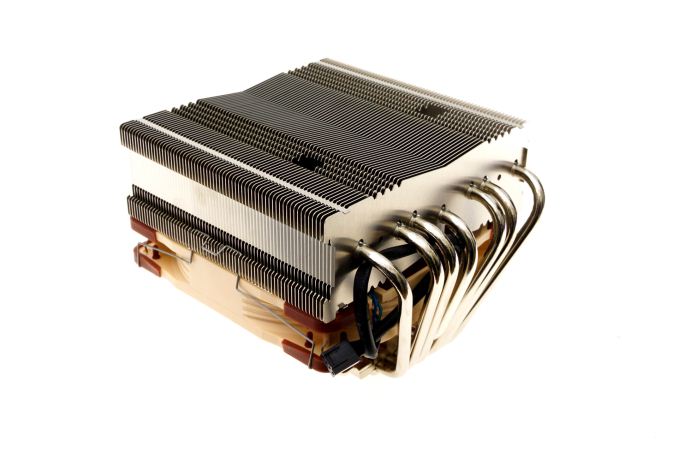
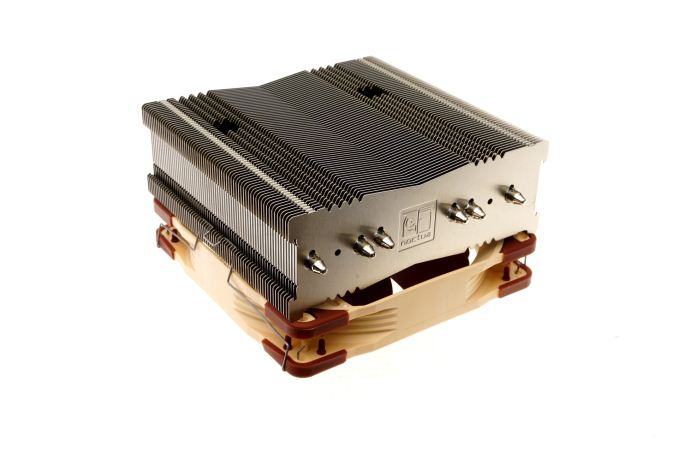
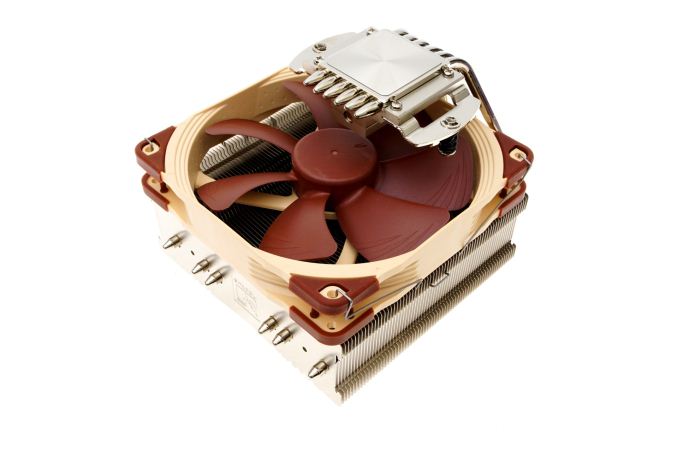
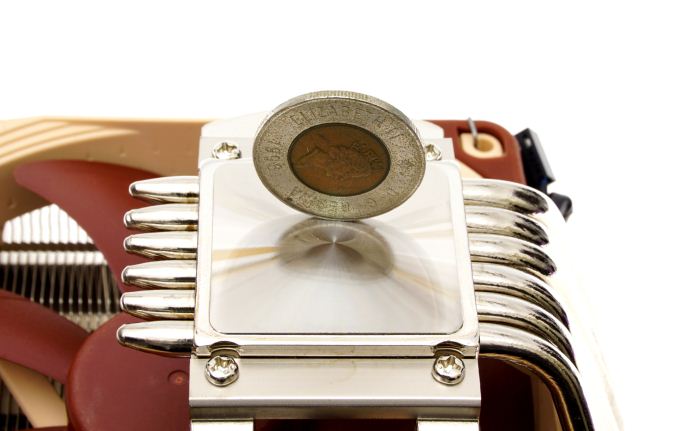








43 Comments
View All Comments
nafs_asp - Tuesday, January 24, 2017 - link
Big Shuriken is probably the best you can cram into a Node 202. I have a 6600k at 4.5GHz in mine, and the Big Shuriken keeps it under 70C during x264 and Aida64.Brainonska511 - Tuesday, January 24, 2017 - link
I have a Cryorig C7 in my mITX system on a regular i5-6600. I could have gone with something taller, as there is room my Corsair 250D, but what was really appealing to me is the fact that the C7 fits completely within the socket area. Some mITX boards are pretty packed and some users reported that other, larger horizontal coolers could block the PCI-E slot or hit other components on the board.creed3020 - Thursday, January 19, 2017 - link
Look no further than a Cryorig C1, it needs 74mm of clearance so see what you can do with your case options. I have one and it works wonders on an overlocked Intel Core i5-4690K @ 4GHz inside a Silverstone RVZ-01B.YukaKun - Wednesday, January 18, 2017 - link
How does the "The Reeven Steropes RC-1206b" stack to the "CM GeminII M4"?They look very similar and the M4 does quite a good job with my old A8-3500 inside a Thermaltake SD200.
Cheers!
creed3020 - Thursday, January 19, 2017 - link
Be very wary of the Cooler Master GeminII M4 as its base has poor CPU contact. The base is not flat and just has the heat pipes squished and exposed to the CPU leaving air gaps between the CPU heatspreader and heatsink base. I know this because I recently bought one for an HTPC with an AMD APU and haven't been very impressed with that aspect. The thermal performance is better than the stock heatsink and acoustics are excellent but the product is not as well engineered as it could be for $45.YukaKun - Friday, January 20, 2017 - link
That is kind of why I am asking. Although I have no complaints on how it's performing, I'd like to know if I should keep it or consider a newer/different HSF for my upgrade.Thanks for the input as well :D
Cheers!
LiviuTM - Wednesday, January 18, 2017 - link
It's Celsius.80-wattHamster - Wednesday, January 18, 2017 - link
Not the subject of this article, but what stands out to me is the performance of AMD's Wraith. It's so close to the 212 EVO in every metric (except fan speed) that one can't help but conclude that AMD used the EVO as its benchmark during development. And very nearly hit it. On a bundled cooler.wolfemane - Wednesday, January 18, 2017 - link
You really should have included the Scythe BIG Shuriken 2 Rev. B cooler to your group as it's also a horizontal cooler. The company claims a max TDP of 130w on 115x CPUs. Noctua only claims 95w max TDP on 115x CPUs for the Noctua NH-C14S. Would have been nice to see how this compares.Spunjji - Wednesday, January 18, 2017 - link
Based on my experience (quietly cooling an i5-2300 in an extremely small HTPC case barely bigger than the ITX board dimensions) it would clobber all of these except for the Noctua, and it will fit where the Noctua will not.